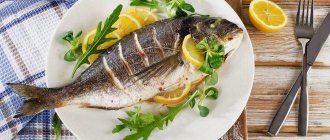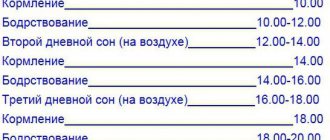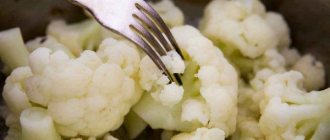A 1-year-old child’s nutrition is important for his or her continued healthy growth and development. When the baby celebrates his first birthday, complementary foods should already be introduced into his diet.
Due to the growth of teeth and increased physical and brain activity, the child requires more nutrients, which means it is worth reviewing his diet.
Diet features
It is from this age that the baby is no longer considered a baby, although doctors recommend continuing breastfeeding until 22-24 months. As a rule, breast milk is included in the menu of a child of this age as an early breakfast or a late-night snack.
Since it is impossible to overfeed a baby with breastfeeding, there is nothing wrong with this, quite the opposite: according to recent studies, mother’s milk prevents the occurrence of caries by delaying the growth of staphylococcus.
But if your baby takes a bottle of formula or juice at night, then you should wean him off this. Unlike breast milk, formula and juices provoke the development of caries, since they disrupt the acid-base balance in the oral cavity, which can cause destruction of tooth enamel. By the age of 1.5 years, the child should be weaned from eating at night, because this disrupts sleep and appetite during the day.
Since by the age of one year babies, as a rule, already have 6-10 teeth, it is worth adding pieces of food to their menu that are not ground into a puree to develop the chewing reflex. The baby should eat 4-5 times a day at approximately the same time with a deviation of 15-20 minutes.
This regime corresponds to the metabolism of the baby, whose stomach is cleared in about 4 hours. If you do not take into account liquids, then a child eats 1200-1250 g of food per day, which is the norm.
This volume is divided into the following portions:
- breakfast and second breakfast – 25%;
- lunch – 35%;
- afternoon snack – 15%;
- dinner – 25%.
The calorie content of the daily diet is approximately 1200-1300 kcal.
You should not teach your child to have snacks between main meals - this worsens appetite.
Making a menu for the baby
How to correctly calculate nutrition for a child after one year? To do this, it is necessary to draw up a detailed menu in compliance with the recommendations of experienced pediatricians. They include:
- soups based on 2nd broth. This will help reduce the fat content of baby food;
- puree and porridge. The basis should be vegetables and fruits cooked in a steam bath. As for the quantity and grams of serving, here you need to start with 50 g and gradually increase to 85 g of the liquid mixture;
- fresh vegetables and fruits. The menu should include: banana, light apple, grated carrots, pear. If a child at this age does not have teeth, then the products are crushed to a homogeneous consistency. This will make it easier to chew and absorb the components;
- juices and fruit drinks. Liquids should be made from low allergenic ingredients. For example, light apples or dried fruits are used for production. They do not cause a pathogenic reaction from the child’s body.
What should be the diet for a child after 1 year and a month? For normal well-being of the baby, it is recommended to take 6 meals a day. This is due to his maximum activity and rapid physical development.
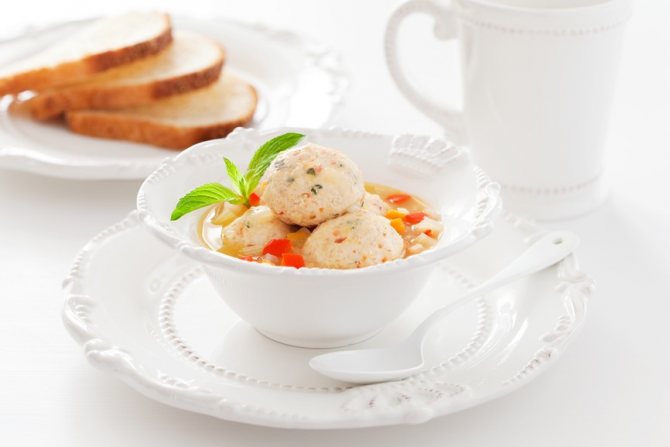
Breakfast should consist of mixed cereals. These substances quickly saturate the body. In addition, they have a low glycemic index, which reduces the constant feeling of hunger.
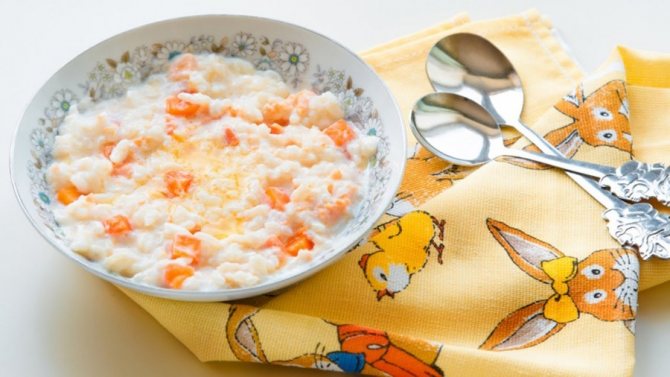
A child's lunch at this age should contain:
- Vegetable or milk soup. As for the ingredients, for the first option you will need: cauliflower, carrots, onions, potatoes, olive oil (5 g). Dairy milk may be based on pasteurized milk with the addition of a small amount of rice cereal.
- The second course can consist of vegetable puree with the addition of a small amount of meat products (25 g). What volume is considered optimal for a one-year-old baby? You need to start with 50 g. The maximum portion of the first course should not reach more than 100 g.
- You can diversify your child's diet with fish. It should be dietary and with a minimum amount of fat.
- For dessert, applesauce or a mix of pear and banana are suitable. Portion is 90 g.
- Compote or pasteurized juice, chamomile or linden tea.
Dinner can consist of low-calorie yogurt or kefir. Cereal cookies are used as carbohydrates.
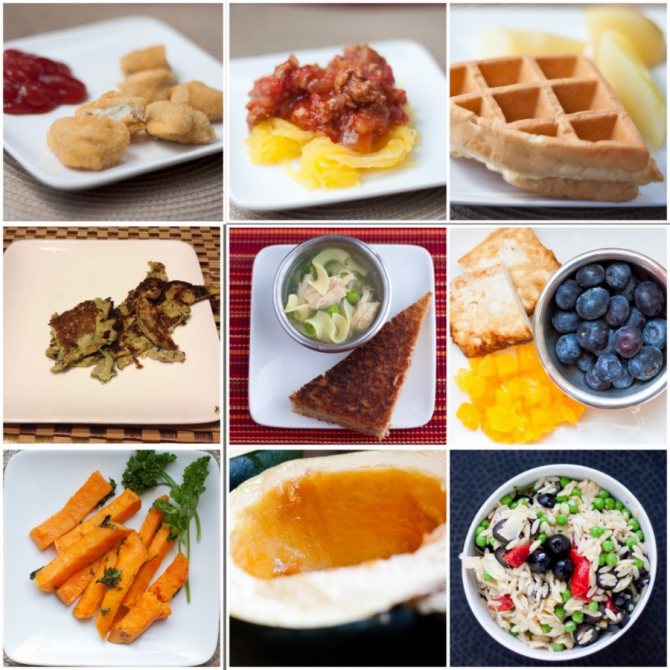
Menu for a one-year-old baby
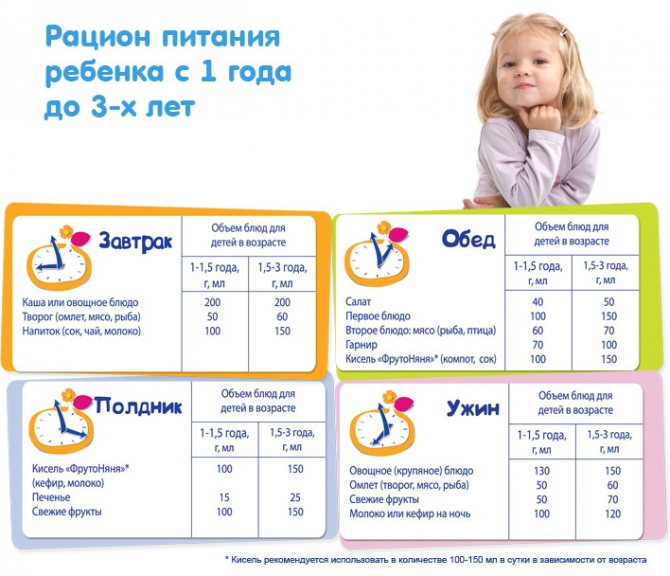
After a year, it is preferable to give children mushy dishes if they have not yet developed chewing teeth, and whole pieces of food (2-3 cm in diameter) if they already have teeth. It is necessary to accustom the child to different tastes so that in the future he does not refuse certain foods.
Porridge and bakery products
Oatmeal and buckwheat are considered especially healthy; corn, rice and wheat porridge are also useful. You can start introducing barley, multigrain, rye and other baby cereals into your baby’s menu. It is better to make them of a uniform consistency by preparing instant (soluble) cereals, then it will be easier for the baby to chew and swallow.
The easiest way to prepare porridge without a long cooking process, preserving its beneficial properties, is to pre-soak it. The cereal will absorb water, soften and swell, then all that remains is to cook it a little until it is fully cooked.
When making oatmeal, it is better to use whole oats. Buckwheat porridge can be poured with milk before serving to the baby, or you can add a little butter. It is worth remembering that even after the first year, doctors still recommend gluten-free cereals.
It is better not to overuse pasta because it contains a lot of easily digestible carbohydrates. They can be offered to your baby 1-2 times a week as a seasoning for soups or a side dish for meat.
From one year onwards, children can be offered bread, preferably white, since the sour dough of rye bread causes fermentation and enhances intestinal motility. Bread in the diet should not be more than 100 g per day. It is better to offer it as an addition to soup or as a sandwich with butter.
Fruits, vegetables and berries
By the age of 1, the child’s menu should include fruits, vegetables and berries. But, if your baby is prone to allergies, you should not experiment without first consulting with an allergist.
Fruits should be given to the child after the main meals; you can also mix them with cereals. They are rich in vitamins, microelements and fiber, and also have a sweet taste that can be used to “embellish” other foods. It is better to grind berries and fruits with thick skins into puree, and with soft ones - cut into slices.
If you mix fruits or berries with milk, you can pamper your baby with a delicious smoothie. The daily norm for children is 100-250 g of fruits and about 10-20 g of berries. In addition, 100-150 ml of fruit or berry juice is allowed after the main meal. However, it is not advisable to give jelly to babies - they are rich in carbohydrates, while their nutritional value is low.
Vegetables are also important for enriching the body with useful elements, mineral salts and dietary fiber. They form the basis of nutrition for children of any age. You need to be careful when including legumes in your diet, as they affect intestinal function and can cause abdominal pain.
Vegetables should be offered in pureed form until your baby has chewing teeth. When your child turns one and a half years old, you can try stewed vegetables with small pieces. Garden vegetables and herbs should be introduced into the diet after 18 months. Potato dishes should not exceed 150g per day, and young children should not be offered radishes, turnips or radishes.
The menu for a baby over one year old should include:
- strawberries, cherries, sweet cherries, currants, sea buckthorn, raspberries, blackberries, cranberries, lingonberries, bananas;
- kiwi, apricots, peaches, pears, apples, lemons, oranges, tangerines, grapefruits;
- carrots, cauliflower, beets, turnips, tomatoes, pumpkin, broccoli, zucchini.
It must be remembered that grapes enhance fermentation in the intestines and at the same time have low nutritional value. You should stay familiar with this product for up to three years.
Dairy
Dairy products owe a significant role in children’s nutrition not only to the beneficial substances in their composition, but also to lactic acid bacteria, which improve digestion. Dairy and fermented milk products should be present in a child’s diet every day. The daily dose of kefir is 200 ml, and yogurt 200-300 ml.
It is better to give your baby special yoghurts: for children or with a limited shelf life of no more than two weeks. Such products do not undergo heat treatment and retain bacteria beneficial to children's intestines.
Among non-children's yogurts, you should choose low-fat, dairy, not creamy ones, and monitor the amount of preservatives, sucrose and artificial additives in the composition.
An important part of a child's menu by the age of 1 year is cottage cheese. After a year, its amount can reach 70 g per day or 140 g every two days. Cottage cheese is useful, both in its pure form and in any dish. Cheese is also important in a baby's diet.
It can be grated as a seasoning for pasta or as a small snack in itself. Hard pieces of cheese will develop a chewing reflex in your baby, so offering them to him is very important.
The daily intake of animal oil is up to 17 g per day. It is better to add butter to pasta, cereals, or make sandwiches for your baby for an afternoon snack. Low-fat sour cream makes an excellent salad dressing or addition to other dishes.
Dairy products can be offered to your baby in the following forms:
- smoothie – beat kefir with seasonal fruits in a blender;
- fruit salad dressed with yogurt;
- milk porridge;
- steamed omelette;
- cottage cheese casserole with sour cream;
- milk soup with noodles;
- cottage cheese with pieces of fruit;
- pudding.
Don't rush to give up formula milk!
It is better to postpone introduction to cow's milk until two years, in order to avoid the occurrence of allergic reactions.
Eggs, fish and meat
Animal protein is as important for a growing body as any other element, so children should not be put on a vegetarian diet. The daily allowance of meat for children is 100 g. You can use both animal and poultry meat and offal (liver, heart, brains, tongue).
Waterfowl meat is difficult to digest, so it should not be offered too often. You should prepare dishes from minced meat (cutlets, meatballs, soufflé, meatballs). Towards the middle of the second year, when the baby has chewing teeth, you can offer stewed meat with whole pieces. Immediately after one year, it is best to prepare steamed cutlets for the baby. You can also add baby sausages to your diet.
Fish is also an important part of the diet. It should be offered once or twice a week in the form of steamed cutlets or meatballs. Stewed fillet is allowed. Fish is rich in iodine, which has a positive effect on brain development and thyroid function. For a one-year-old child, low-fat varieties of river and sea fish are best suited: hake, cod, pollock.
Children over the age of one year cannot eat without eggs. Protein is absorbed almost completely by the child’s body. Food should include quail and chicken eggs.
Waterfowl eggs can carry dangerous infections, so you should postpone their consumption. Only hard-boiled eggs should be offered as food. Raw eggs, soft-boiled or boiled in a bag, are less digestible. You can also pamper your baby with an omelet.
If you cook it in the microwave, the crust will not form and it will be baked instead of browned like in a frying pan. Since eggs are highly allergenic, you should not offer them to your child more than every other day. They can be added to vegetable puree or offered along with porridge.
Meat, fish and eggs can be cooked or added to other dishes as follows:
- steam cutlets for porridge or vegetable salads, meatballs, meatballs for soup, soufflé;
- canned fish and vegetable baby food;
- eggs - in soup or salad;
- omelette.
It is worth remembering that only lean varieties of meat are suitable for feeding children.
Basics for feeding a child aged 1 year and a month
What foods to choose for a one-year-old child? Dairy products should remain the main components of the baby's menu. The fact is that many children at this age remain breastfed or bottle-fed.
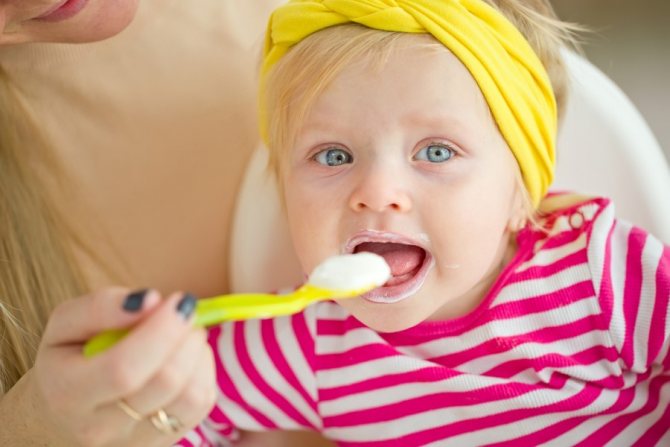
These components help normalize stool and well-being after the introduction of complementary foods. To do this, it is recommended to choose specialized formulations that are available in baby food stores. They contain a minimal amount of fatty acids, which can cause diarrhea in a baby.
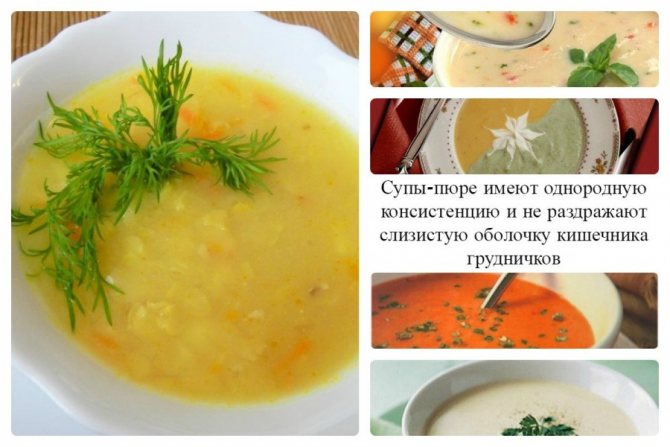
In addition, the maximum level of nutrients in the form of vitamins and microelements is noted here. For each age group there is a wide selection of dairy products with a high content of iron and calcium. All these substances contribute to proper physical development.
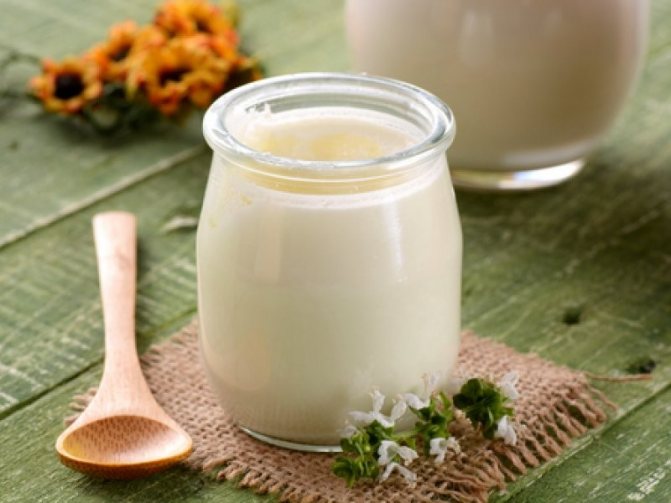
A child of 1 year and a month should eat a small amount of meat. To do this, you need to choose lean varieties of beef, rabbit or turkey. Meat fibers are quickly absorbed by the gastrointestinal tract without causing constipation.
Particular attention should be paid to cereals, fresh herbs and fruits. These products activate correct thinking and normal muscle growth. Baked apples are used as dessert.
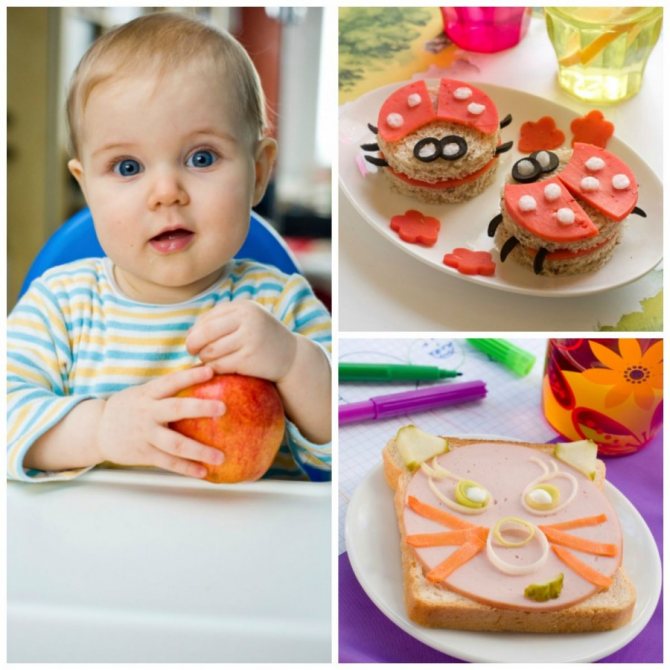
What to feed a one-year-old child: menu
So, in accordance with the above practical tips on what to feed a child per year, an approximate menu for 7 days is as follows:
- First day: breakfast - breast milk or 150 g of milk noodles with grated cheese, 10 g of wheat bread and 50 g of egg omelet. Lunch – 100 ml of broccoli puree soup, 50 g of fish balls, 100 g of mashed potatoes and green peas and 100 ml of cherry juice. Snack – 100 g of milk pudding, 100 ml of tea with sugar and 15 g of baby biscuits. Dinner – 100 g of cauliflower puree, 80 g of pureed cottage cheese, 100 ml of tea with milk and 10 g of wheat bread;
- Second day: breakfast, already knowing what to feed a 1-year-old child, consists of breast milk or 150 g of buckwheat porridge with milk, 100 ml of chicory with milk and 10 g of wheat bread. Lunch – 100 ml of pea soup, 50 g of chicken soufflé, 100 g of carrot puree, 20 g of wheat bread and 100 ml of fruit juice. Snack – 150 ml of boiled milk and 30 g of cheese pie. Dinner – 80 g of baked apples with raisins and dried apricots, 100 g of mashed potatoes, 100 ml of tea with sugar and 10 g of wheat bread;
- Third day: breakfast - breast milk or 200 g of oatmeal, 100 ml of tea with milk and 20 g of wheat bread with 10 g of cheese. Lunch – 100 ml of carrot-pumpkin soup, 50 g of vegetable salad with fish, 100 g of mashed potatoes, 100 ml of berry juice and 20 g of wheat bread. Snack – 100 ml of kefir, 100 g of applesauce and 15 g of baby cookies. Dinner – 80 g of pureed cottage cheese with milk, 100 g of carrot puree and 100 ml of boiled milk;
- Fourth day: breakfast - breast milk or 150 g of semolina porridge with carrots, 50 g of omelette with cabbage, 100 ml of tea with milk and 10 g of wheat bread. Lunch – 100 ml of spinach puree soup, 50 g of lazy cabbage rolls, 100 g of stewed beets with carrots, 100 ml of rosehip tea and 20 g of pancakes. Snack – 150 ml of yogurt and 15 g of children's cookies. Dinner – 200 g of banana pudding, 100 ml of tea with milk and 10 g of wheat bread;
- Fifth day: Breakfast, already knowing what to feed a one-year-old baby, consists of breast milk or 200 g of rice pudding, 100 ml of tea with milk and 20 g of wheat bread with 10 g of cheese. Lunch – 100 ml cabbage soup, 50 g beef roll, 100 g mashed potatoes, 100 ml tomato juice and 20 g wheat bread. Snack – 100 ml of kefir, 1 apple and 15 g of children's cookies. Dinner – 80 g of pureed cottage cheese with milk, 100 g of beetroot puree with apple and 10 g of wheat bread;
- Sixth day: breakfast breast milk or 200 g of pear pudding, 100 ml of tea with honey and 10 g of wheat bread. Lunch – 100 ml of chicken puree soup, 50 g of turkey cutlets, 100 g of zucchini puree and 20 g of wheat bread. Snack – 100 ml of boiled milk, 50 g of fresh fruit and 15 g of children's cookies. Dinner – 80 g of cottage cheese with milk, 100 g of mashed potatoes, 100 ml of jelly and 10 g of wheat bread;

Seventh day: breakfast, already knowing what to feed a one-year-old baby, consists of breast milk or 200 g of rice porridge, 100 ml of tea with sugar and 10 g of cheesecakes. Lunch – 100 ml of cheese soup, 50 g of chicken cutlets, 100 g of zucchini pancakes, 100 ml of fruit jelly and 20 g of wheat bread. Snack – 160 ml of kefir with mashed apples and 15 g of crackers. Dinner – 120 g of semolina porridge, 50 g of omelette, 100 ml of boiled milk and 10 g of wheat bread.
When thinking about what to feed a one-year-old child, the daily diet for the most part should consist of a variety of vegetables, steamed or boiled. The best vegetables for a one-year-old baby are pumpkin, zucchini, cucumbers, cauliflower, tomatoes, carrots and potatoes. Salads made from fresh vegetables with lettuce and dill, sprinkled with a small amount of sunflower oil or seasoned with a small amount of unsweetened yogurt or low-fat sour cream, are very healthy for children. As a drink, the baby will be happy to drink compotes from berries, fruits or dried fruits, various fruit juices, jelly and rosehip infusions.
Many mothers who are thinking about the question of what to feed their child per year are also interested in the question of what food will be most beneficial for the child before bedtime. Most pediatricians believe that if a mother is still feeding her one-year-old child breast milk, then it is better to drink it before bed. If the baby is already completely weaned, then before going to bed he needs to be given fermented milk drinks.

